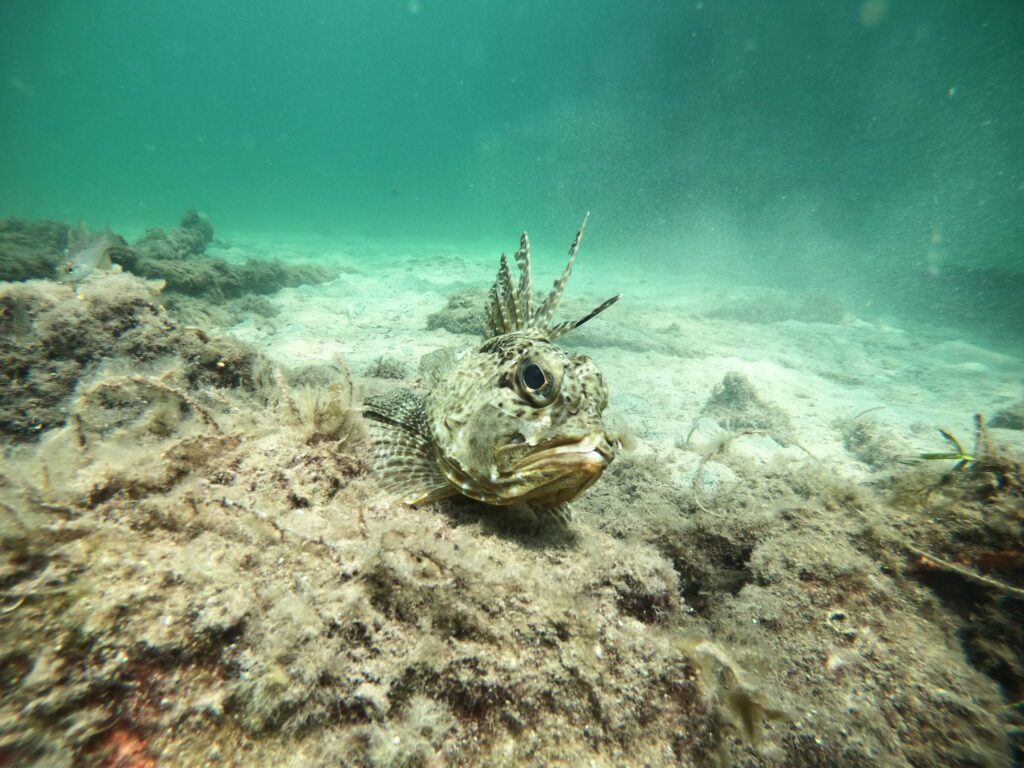Gurnard Perch
Neosebastes pandus
The Gurnard Perch falls within the fish family Scorpaenidae, along with the infamous stonefish of the tropics. The Gurnard Perch has a particularly large, rounded head and a slender body with large spotted pectoral fins and thirteen long venomous dorsal spines. The fish raises these spines in defense should a threat approach and are capable of inflicting painful wounds when the venom is injected under pressure. The treatment, if stung, requires the affected area to be immersed in very hot water, as the venom will breakdown when heated. Colouration of the gurnard perch can be quite varied from nearly white, to pale olive green to dark brown, although its lower surface can be yellow, orange or red. The colour pattern on the tail (caudal fin) changes with growth, where young juveniles have a vertical black band which changes to black spots scattered on the fin in older fish. The Gurnard Perch attains a maximum size of 50 centimetres.
The Gurnard Perch inhabits rocky reefs, shallow weedy to deep sponge areas where individuals rest motionless on their pectoral fins in camouflaged positions on the substrate in order to ambush prey. Gurnard Perch are found from the Houtman Abrolhos Islands, WA to Gulf St Vincent, SA and are a species endemic to Australian waters. They are commonly found between depths of 10 to 200 metres, although have been found as deep as 600 metres.
Other common names include Rough gurnard perch, Bighead gurnard perch, Gurnard scorpionfish.
Occurrence at the Busselton Jetty
The Gurnard Perch is particularly common throughout the summer months around the underwater observatory. We have observed many colour variations, from olive green, to brown and to a vibrant red and most gurnard perches we observe are approximately 30cm in length. Occasionally they rest the entire day in the one position, every now and then raising their spines and when disturbed have a very fascinating swimming style which is almost like flying with their pectoral fins outstretched. They are most often solitary, however three were observed in close proximity (within centimetres) of one another during the 2007/2008 season.
Image by: O. Rynvis
